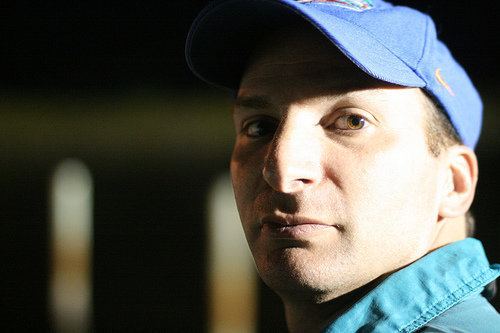Nationality American | Role Astronomer Name David Ciardi | |
 | ||
Born 17 July 1969 (age 56) ( 1969-07-17 ) Thesis Star Formation in the Filamentary Dark Cloud GF-9: a Multi-Wavelength Intra-Cloud Comparative Study (1997) Doctoral advisor Charles E. (Chick) Woodward Alma mater | ||
Residence United States of America | ||
David ciardi donazione opera parco d arte bumbumga
David Robert Ciardi (born 17 July 1969) is an American astronomer. He received a bachelor's degree in physics and astronomy from Boston University in 1991, and a Ph.D. in physics from the University of Wyoming in 1997.
Contents
- David ciardi donazione opera parco d arte bumbumga
- David ciardi installazione ambientale il corteo delle vedove wmv
- Academic lineage
- References
Ciardi has published refereed journal articles across a wide range of topics, including exoplanets, star formation, interstellar dust, molecular clouds, and evolved stars. His observations of Vega using long-baseline interferometry with the Palomar Testbed Interferometer were the first to spatially resolve the debris disk around this star and to show that dust was present within 1 AU of the star - akin to the interplanetary dust in the Solar System that produces the zodiacal light. This work led to the discovery of dust in the inner regions around other stars and leading to the discovery of a gap between the inner dust ring and the outer dust ring in many systems - the existence of which is still not understood. Ciardi is a member of the Kepler Science Team and using data from the Kepler mission, Ciardi has published landmark works on the fundamental nature of stellar variability and the relative sizes of planets in multi-planet systems and has contributed to more than 100 exoplanet discovery papers, including many of the Kepler Mission discoveries and being the principal investigator of the Palomar Transient Factory Orion Transit Survey and co-discoverer of the first transiting planet around a newly formed T Tauri star in the 3-million-year-old star cluster surrounding 25 Orionis.
Ciardi completed his PhD at the University of Wyoming in 1997, and remained in Laramie for another year as a post-doctoral fellow. He left Wyoming to become a post-doc for Elizabeth Lada at the University of Florida, ostensibly to work on the Wide Field Infrared Explorer (WIRE) mission. The unfortunate failure of WIRE's main telescope immediately following launch sidetracked that research path, however; Ciardi remained at Florida and became a staff member with the infrared instrumentation group where he worked on an array of infrared instruments, including T-ReCS for the 8m telescope Gemini South and CanariCam for the 10m Gran Telescopio Canarias. In 2002, Ciardi took a staff astronomer position at the NASA Exoplanet Science Institute; he is currently the NExScI Chief Scientist, and is a Member of the Professional Staff at Caltech.
In 2016, Ciardi was awarded the NASA Exceptional Scientific Achievement Medal for his work on Kepler and his contributions to the confirmation of Kepler's exoplanets which have led to the characterization of planets ranging in size from Jupiters to Earths. The NASA Exceptional Scientific Achievement Medal is awarded to individuals for unusually significant scientific contributions toward achievement of aeronautical or space exploration goals.
David ciardi installazione ambientale il corteo delle vedove wmv
Academic lineage
The following is the historic path of Ciardi's advisors - otherwise known as his academic lineage - spanning two centuries of scientific achievement.
